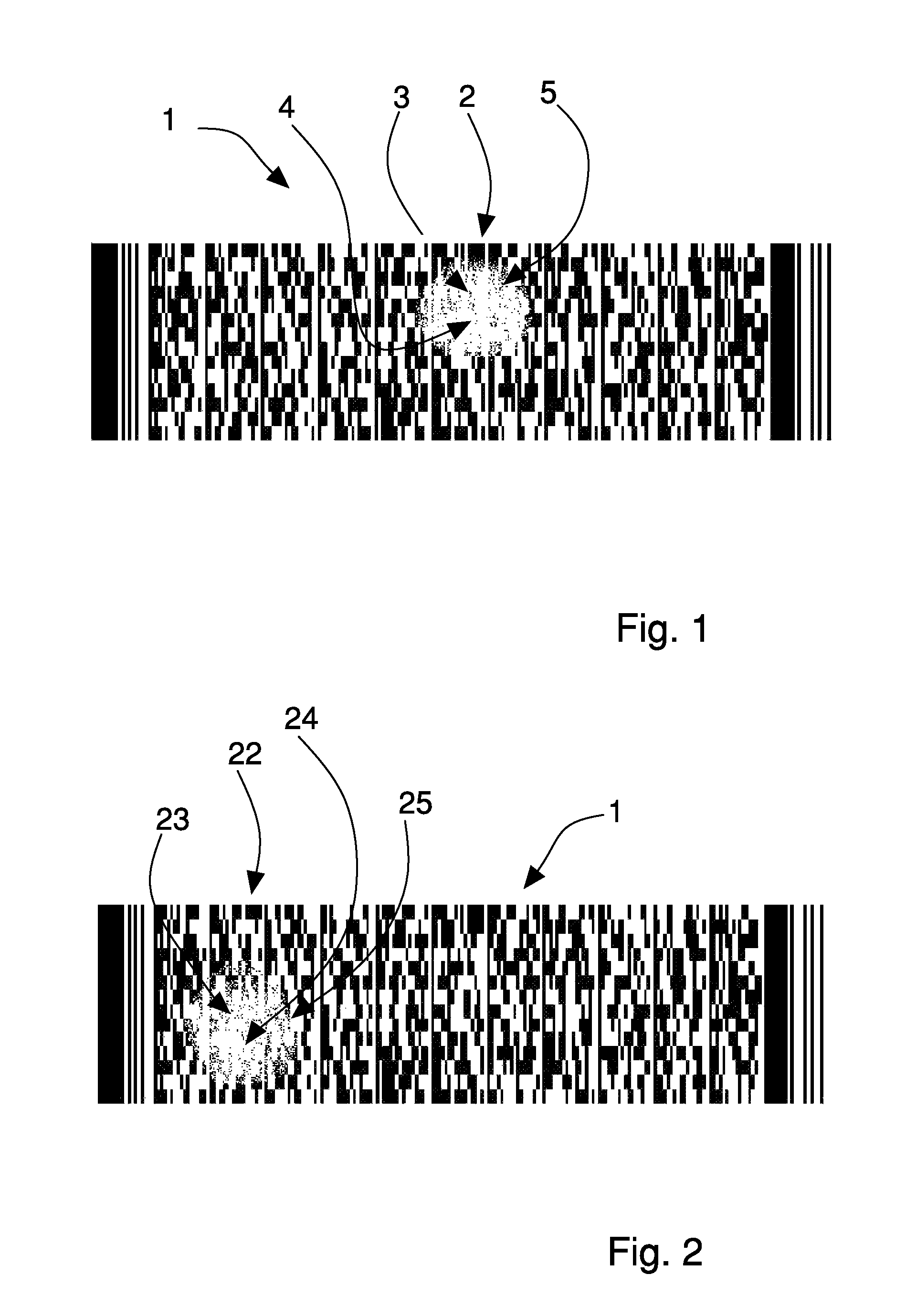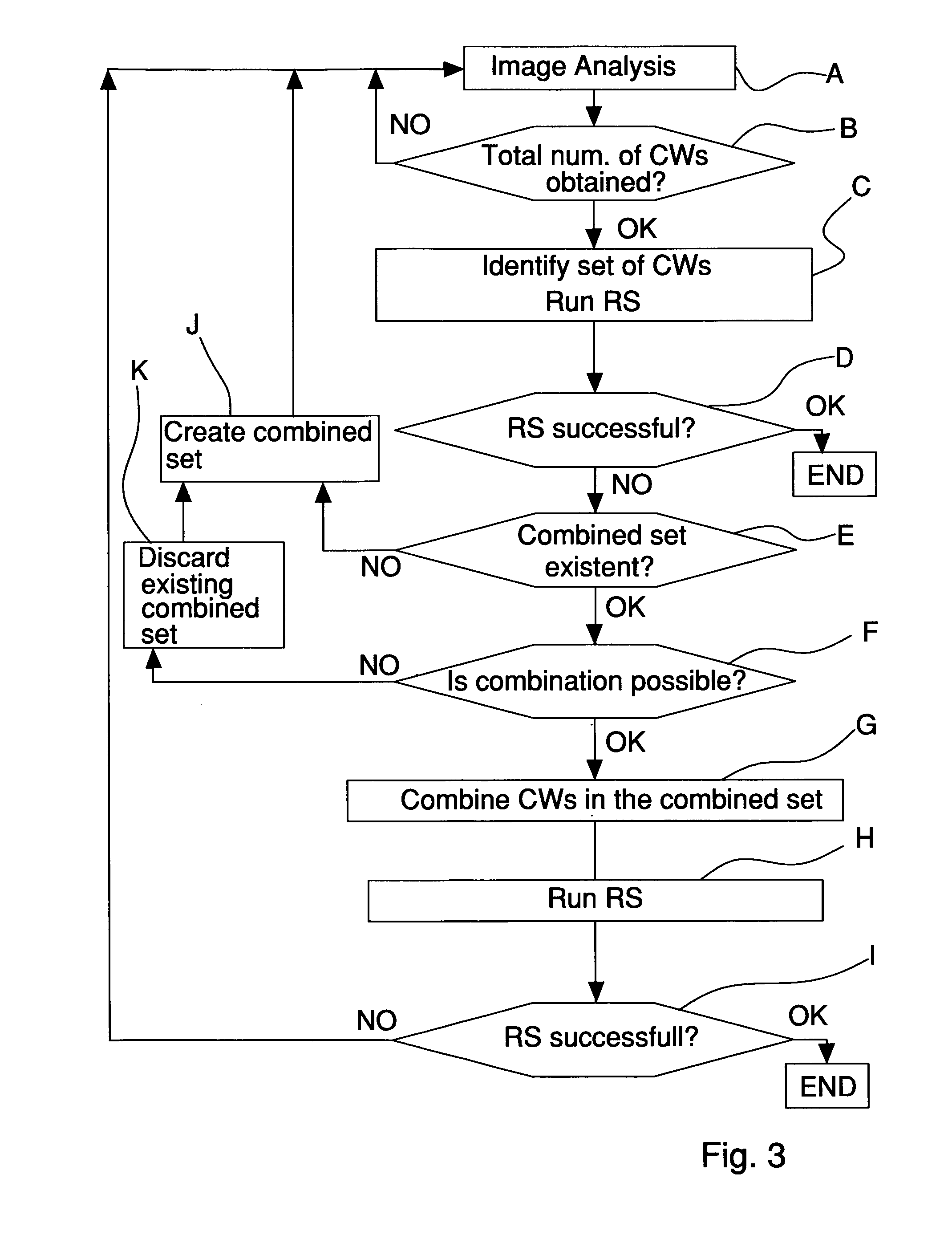Method for decoding a two-dimensional optical code
a two-dimensional optical code and code technology, applied in the field of two-dimensional optical codes, can solve the problems of detection and self-correction, inability to decode barcodes, and damage to the image of optical codes positioned on the reflecting surface, so as to reduce the probability of having an erroneous codeword
- Summary
- Abstract
- Description
- Claims
- Application Information
AI Technical Summary
Benefits of technology
Problems solved by technology
Method used
Image
Examples
Embodiment Construction
[0034]With reference to FIG. 1, there is shown an image, as acquired by a reader (which is not shown), in which a two-dimensional code 1 is present, in particular a PDF-417 symbology code.
[0035]The two-dimensional code in FIG. 1 is represented as a succession of elementary black and white cells on a white background. It can be noticed that a portion of image 2 of the code has deteriorated, for example because the supporting surface on which the two-dimensional code is positioned is reflective. The portion of image 2 comprises a highly luminous white spot 3 at which the elementary cells of which the two-dimensional code is made are not identifiable. Typically, a white spot has a central zone 4 that is almost uniformly white and an edge that is on the other hand blurred 5, the edge bounding the deteriorated portion from the succession of elementary white or black non corrupted cells. It is important to emphasise that very often the elementary cells arranged in the blurred edge 5 can g...
PUM
 Login to View More
Login to View More Abstract
Description
Claims
Application Information
 Login to View More
Login to View More - R&D
- Intellectual Property
- Life Sciences
- Materials
- Tech Scout
- Unparalleled Data Quality
- Higher Quality Content
- 60% Fewer Hallucinations
Browse by: Latest US Patents, China's latest patents, Technical Efficacy Thesaurus, Application Domain, Technology Topic, Popular Technical Reports.
© 2025 PatSnap. All rights reserved.Legal|Privacy policy|Modern Slavery Act Transparency Statement|Sitemap|About US| Contact US: help@patsnap.com



